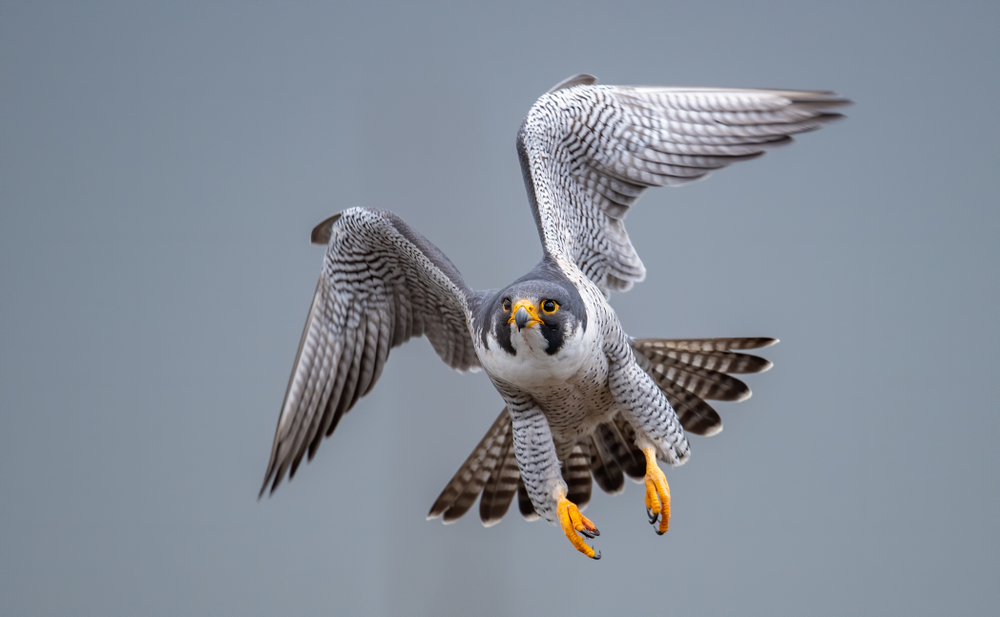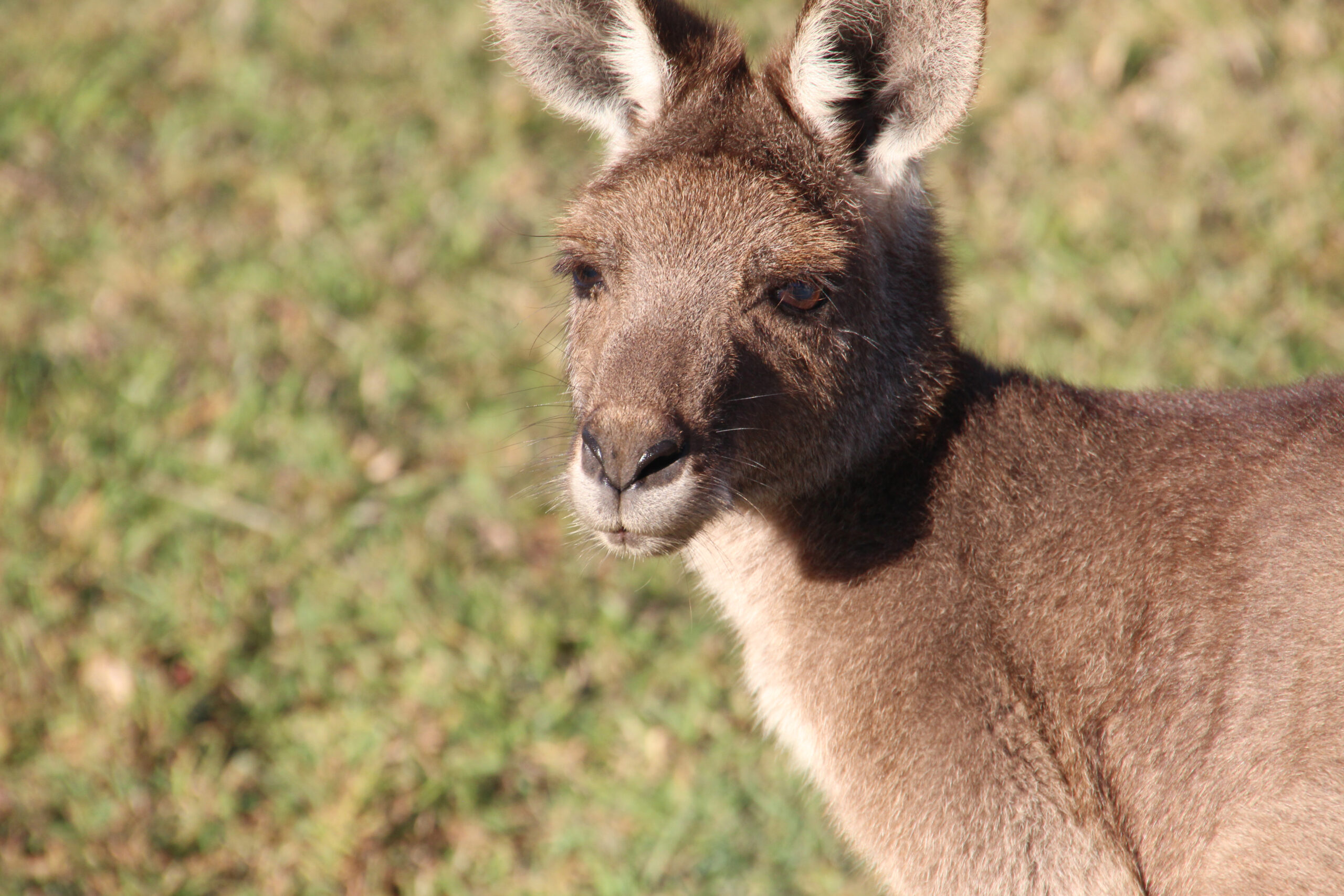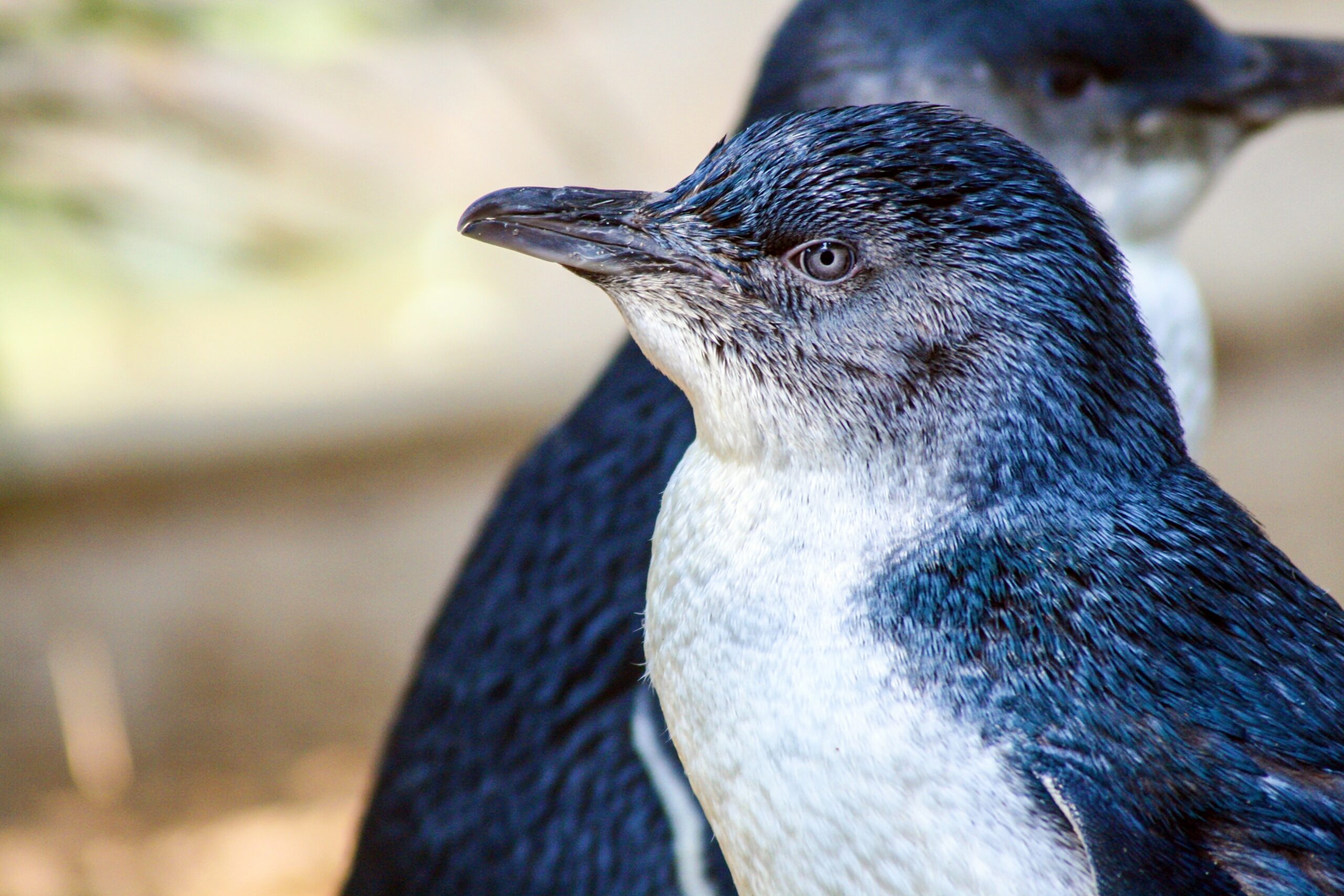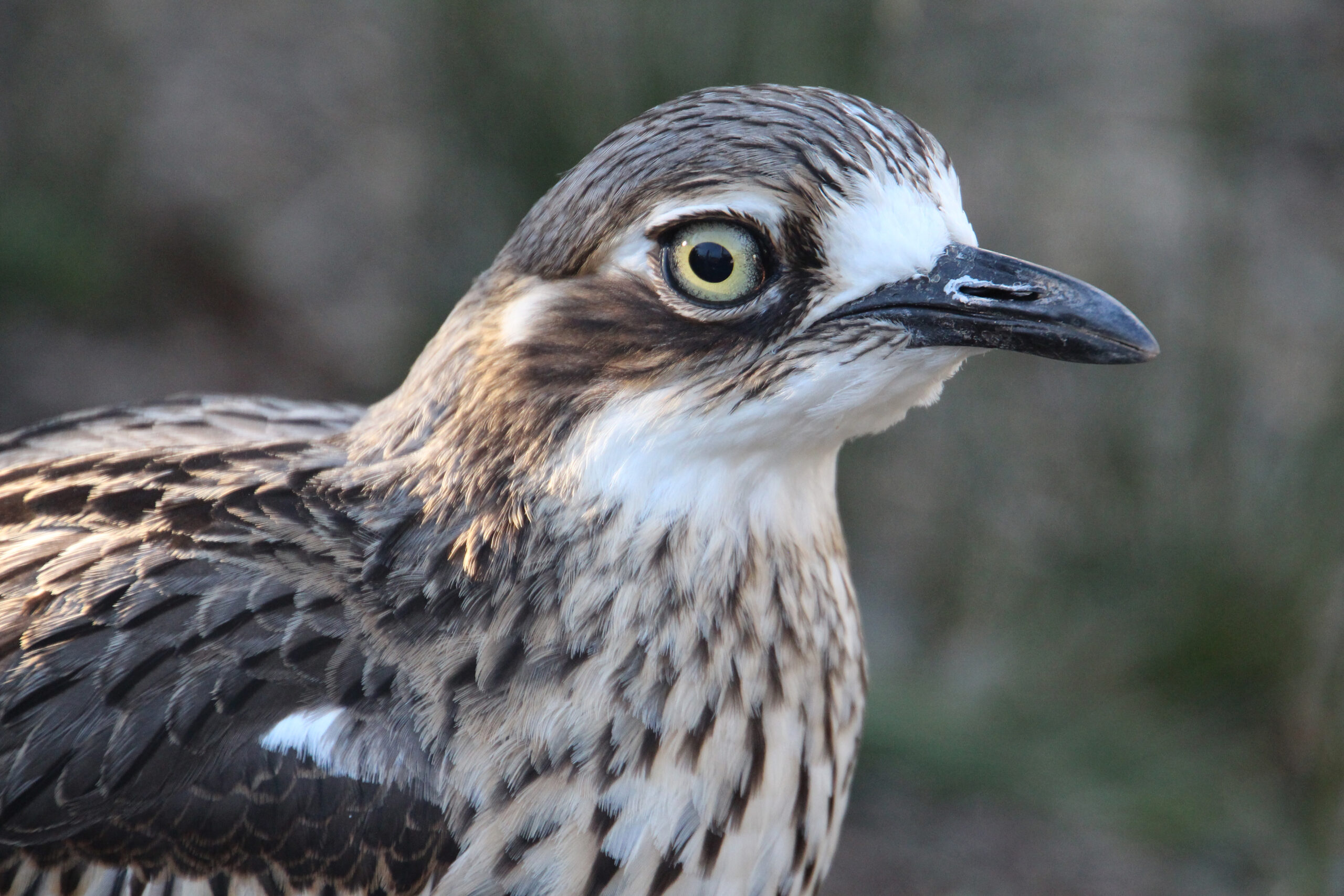| Common name | Peregrine falcon |
| Scientific name | Falco peregrinus |
| Type | Bird |
| Diet | Carnivorous, eating small birds, rabbits, and other small mammals |
| Average lifespan | Up to 17 years |
| Size | Between 35 and 50cm in length, with a wingspan of 80-105cm |
The peregrine falcon is an expert sky diver. Taking out the honours as the world’s fastest bird AND the world’s fastest animal, the peregrine falcon can reach an incredible diving speed of up to 300km per hour during flight.
Also noted as one of the most common birds of prey, the peregrine falcon can be found on every continent except Antarctica, with populations scattered across Australia.
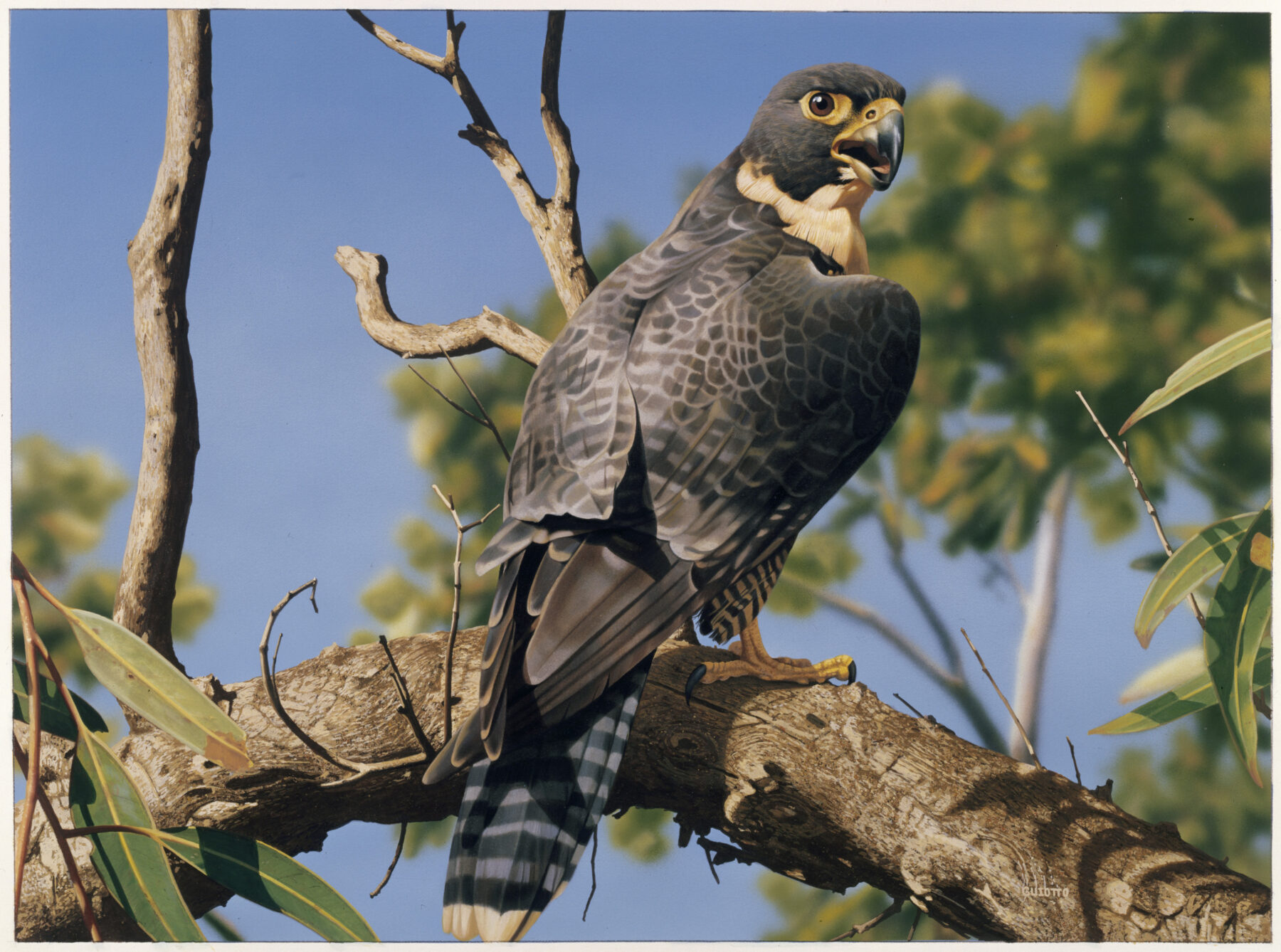
A large blue-grey raptor, with barred underparts, creamy white chin and chest and a dark hood, this falcon is a powerfully built hunting machine. Peregrines have long pointed wings and females are generally larger than males.
With a striking yellow eye-ring and matching heavy yellow bill with black tip, the peregrine has feathery upper legs, with yellow lower legs and feet. Large sharp talons complete this bird of prey’s striking appearance and are used to easily catch and kill food mid-flight.
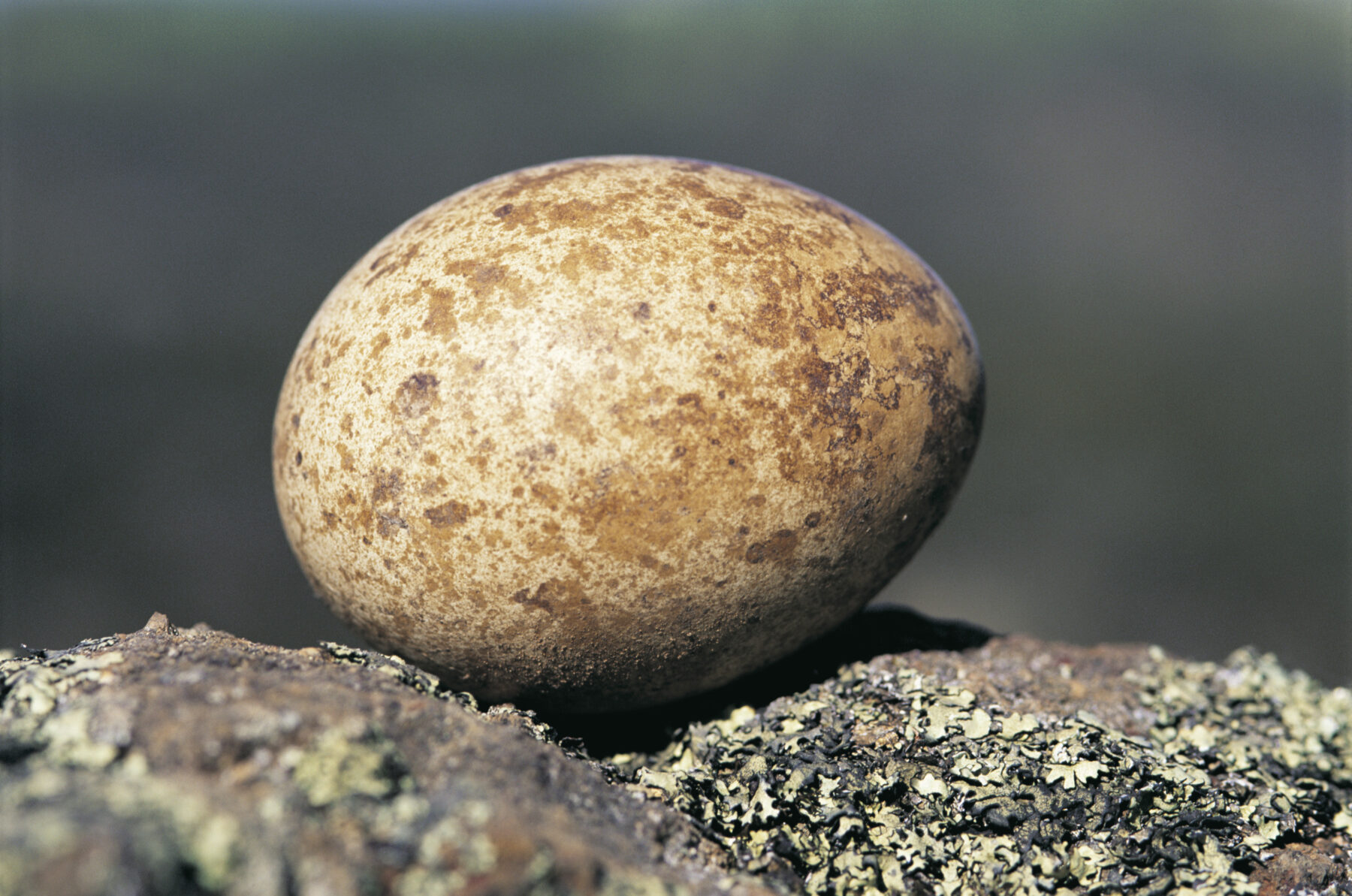
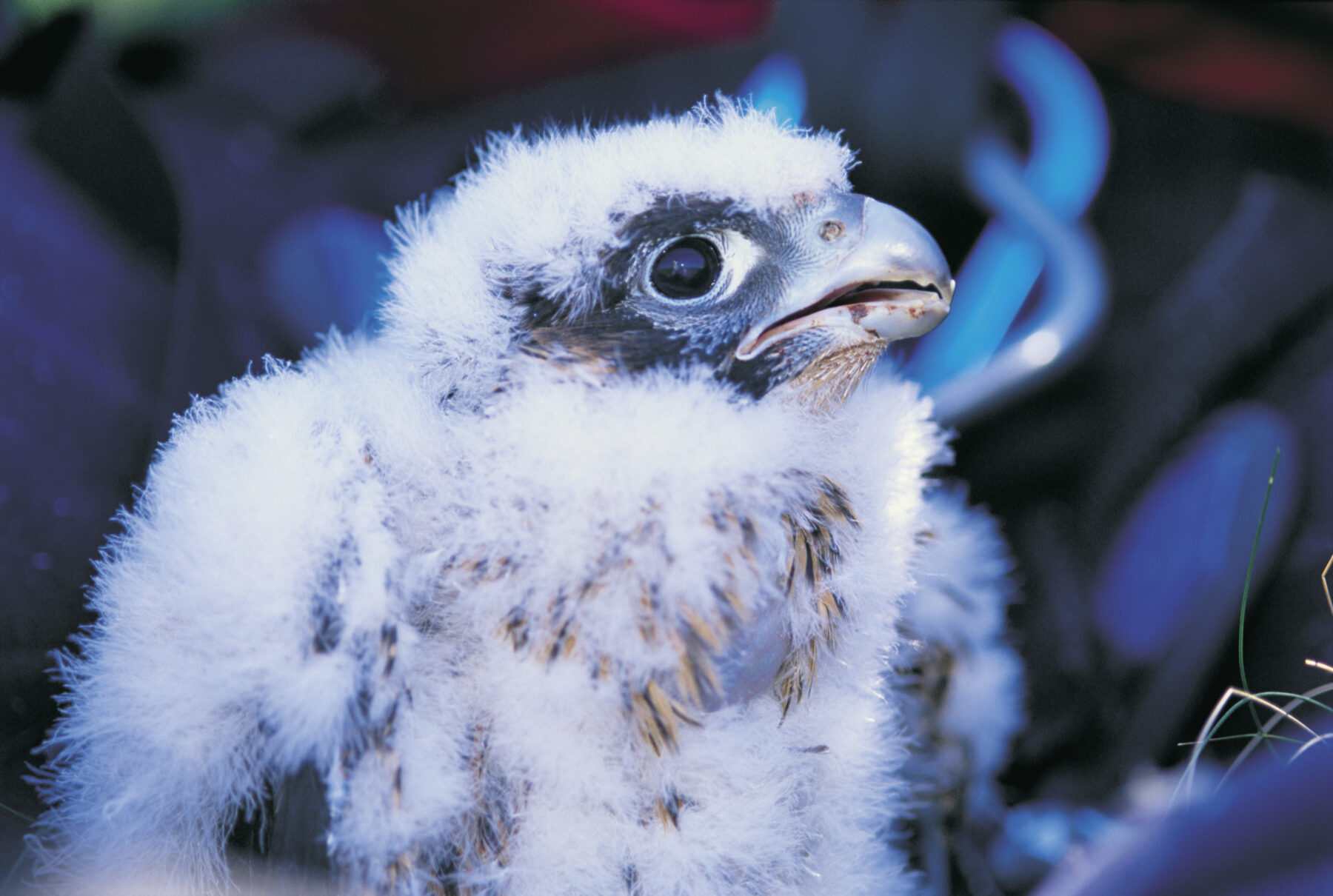
The peregrine falcon is found throughout Australia, Asia, Europe, the Americas, and Africa. Highly adaptable, the peregrine lives in a greater variety of habitats than any other bird of prey on the planet. From the arid desert zone to the rainforest, the coast to alpine terrain, this falcon will reside happily at sea level but is equally suited to the high altitude of the mountains.
Australian peregrines are usually sedentary and hold the same territories and nest sites throughout the year. Preferring wide-open woodlands with a water source nearby or coastal or inland cliffs, the peregrine falcon has also adapted well to human settlement and have been known to live on bridges and high buildings within cities.
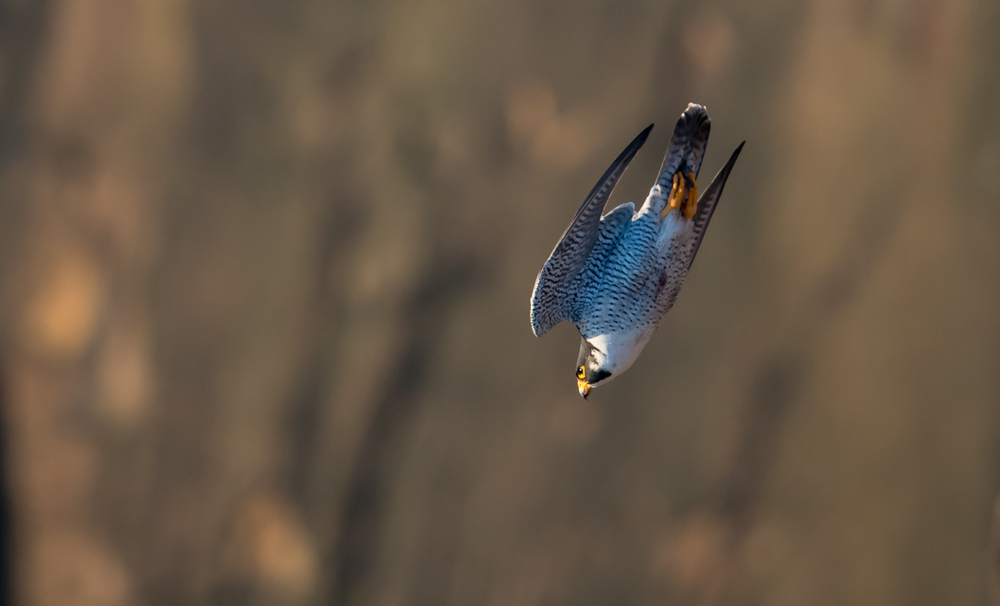
Dinner time is a speedy affair for the peregrine, with the bird recording speeds of up to 300km per hour in a dive chasing a meal. The falcon mainly eats other birds that are caught in flight, which are then carried to a perch before being plucked and eaten.
City dwelling falcons feed on feral pigeons, as well as honeyeaters and some water birds, with all peregrines also dining on rabbits and other small mammals when the opportunity presents. During breeding season, peregrines have been known to hunt in pairs, with the male usually scattering a bird flock, while the female swoops down to snatch a targeted bird to eat.
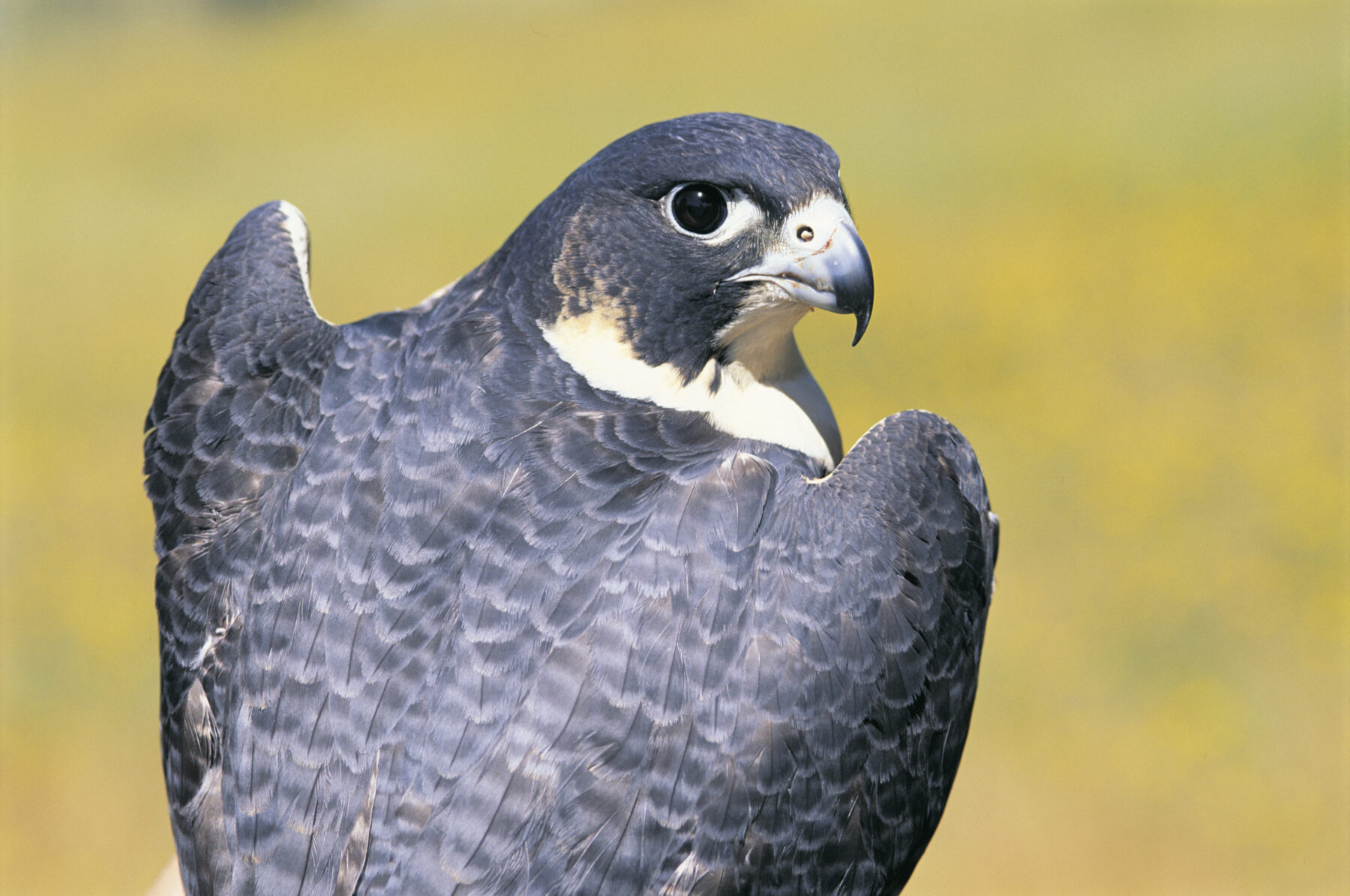
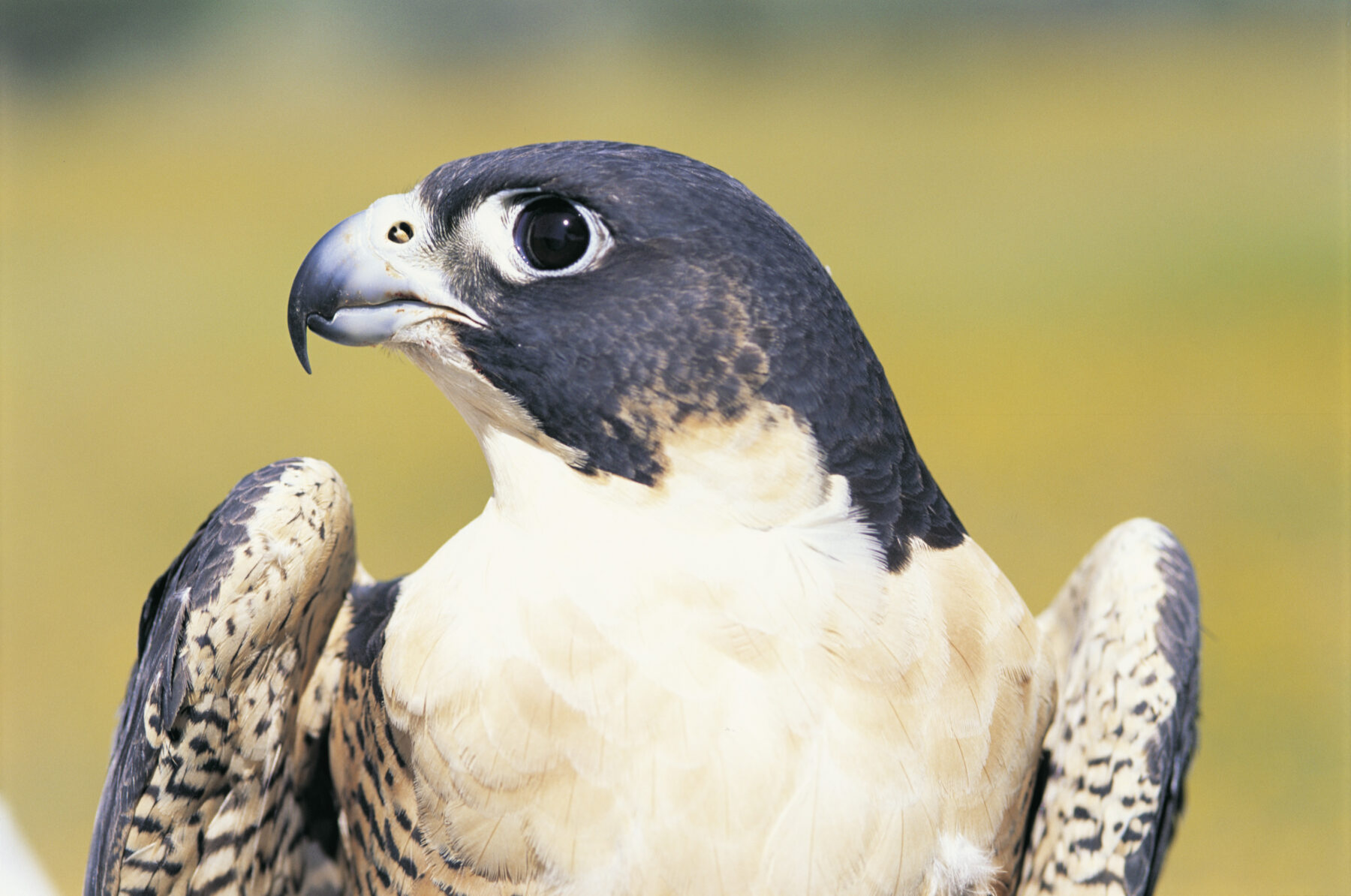
Peregrines don’t build nests but instead lay between two and four eggs within a shallow dip in a rock or cliff face, tree hollows, on the ledge of a tall building or in the abandoned nests of other bird species such as the whistling kite.
Peregrine falcons mate for life and share the duties of incubating and feeding their chicks. A loud scream or “kee-kee-kee-kee” sound is used by peregrines to communicate with their mate. Breeding between August and December, eggs take 30 days to hatch, and once the chicks leave the nest after around 35 days, they will travel widely but often return to their original home territory to eventually breed themselves.
Peregrine falcons have been used by humans in the sport of falconry for over 3000 years. These birds are easily bred in captivity and adapt well to humans who, over the centuries, have trained them to hunt.
